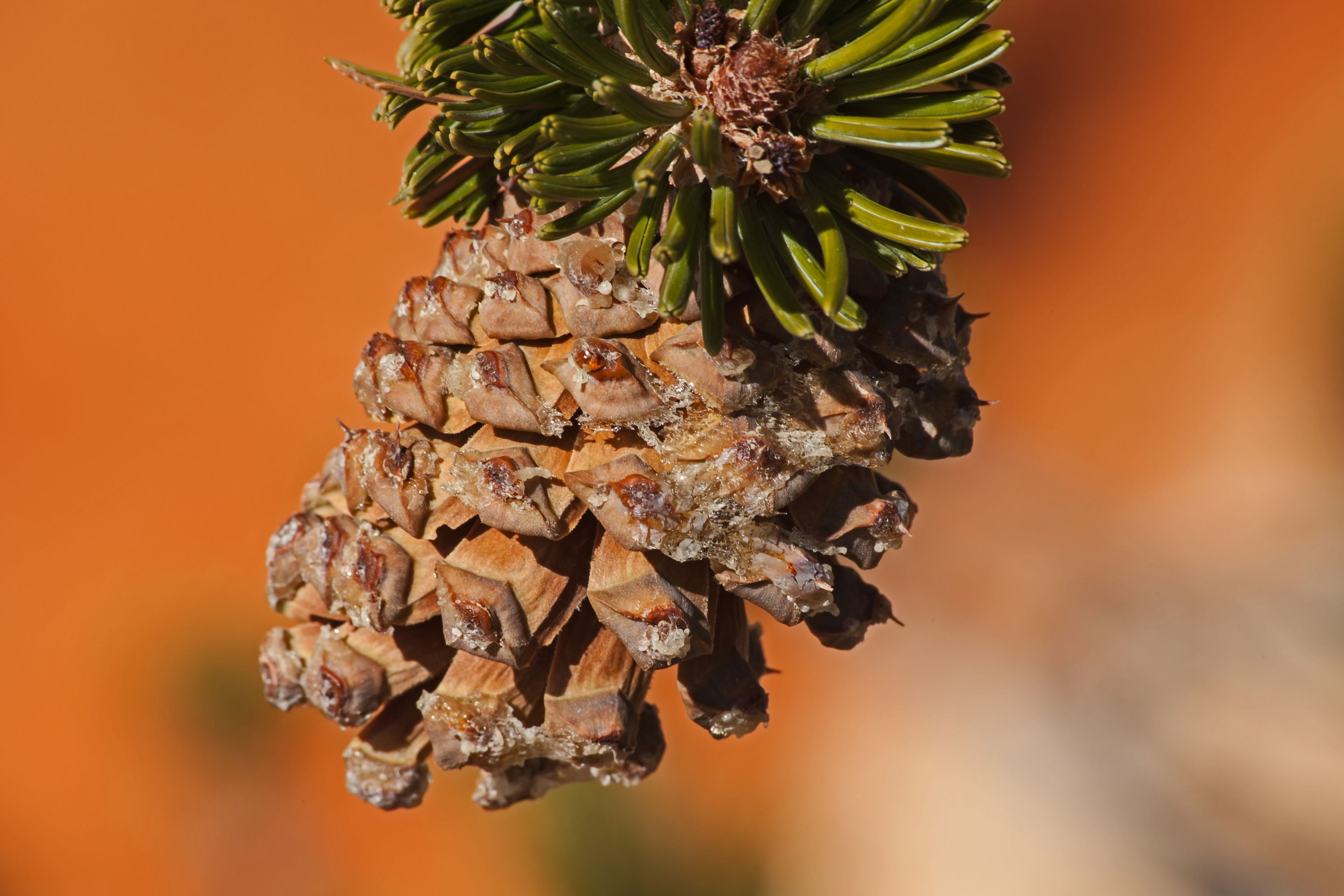Great Basin bristlecone pine
(Pinus longaeva)

Description
Pinus longaeva, commonly known as the Great Basin bristlecone pine, is a species of pine tree native to the Western United States. This species is known for its long lifespan, with some individual trees living for thousands of years, making it one of the longest-lived organisms on the planet. In this article, we will explore the characteristics, ecology, and cultural significance of Pinus longaeva. Taxonomy and Nomenclature The scientific name of the Great Basin bristlecone pine, Pinus longaeva, was first published by George Engelmann in 1879. The species name, "longaeva," means "long-lived" in Latin, a reference to the tree's exceptional lifespan. The tree is part of the Pinaceae family, which includes other conifers such as spruces, firs, and cedars. Distribution and Habitat Pinus longaeva is primarily found in the Great Basin region of the Western United States, which includes portions of Nevada, Utah, and California. The tree is adapted to the harsh environmental conditions of this region, including cold winters, hot summers, and low precipitation. It typically grows at high elevations, between 1,500 and 3,000 meters (5,000 to 10,000 feet) above sea level. Characteristics Pinus longaeva is a slow-growing, evergreen tree that can reach heights of up to 25 meters (80 feet). The tree's bark is thin, dark brown, and scaly, and the needles are greenish-gray and grow in bundles of five. The cones of Pinus longaeva are typically small, measuring between 4 and 8 centimeters (1.5 to 3 inches) in length, and are often clustered near the top of the tree. Lifespan The Great Basin bristlecone pine is perhaps most famous for its exceptional lifespan, with some individual trees living for over 5,000 years. The oldest known living tree is a Pinus longaeva named "Methuselah," which is estimated to be over 4,800 years old. This remarkable longevity is due in part to the tree's slow growth rate and its ability to withstand harsh environmental conditions such as drought, cold, and wind. Ecology Pinus longaeva plays an important role in the ecology of the Great Basin region. The tree's needles provide a valuable source of food for a variety of wildlife, including birds, squirrels, and deer. The tree's bark is also an important habitat for a variety of insects and other invertebrates. In addition to its ecological significance, Pinus longaeva has also been used by humans for a variety of purposes throughout history. The wood of the tree is highly valued for its durability and resistance to decay, making it a popular choice for construction and furniture-making. The tree's resin has also been used for medicinal purposes and as a waterproofing agent. Cultural Significance Pinus longaeva has played an important role in the cultures of the Native American tribes that have inhabited the Great Basin region for thousands of years. The tree has been used for a variety of purposes, including food, medicine, and as a material for making baskets, bows, and arrows. The Great Basin bristlecone pine is also considered a sacred tree by some tribes, and its presence is often associated with spiritual and cultural significance. Conservation Status Pinus longaeva is considered a species of least concern by the International Union for Conservation of Nature (IUCN). However, the tree is threatened by a variety of factors, including climate change, disease, and human activities such as logging and development. Efforts are underway to protect and conserve the Great Basin bristlecone.
Taxonomic tree:







